#Amun-re
Text
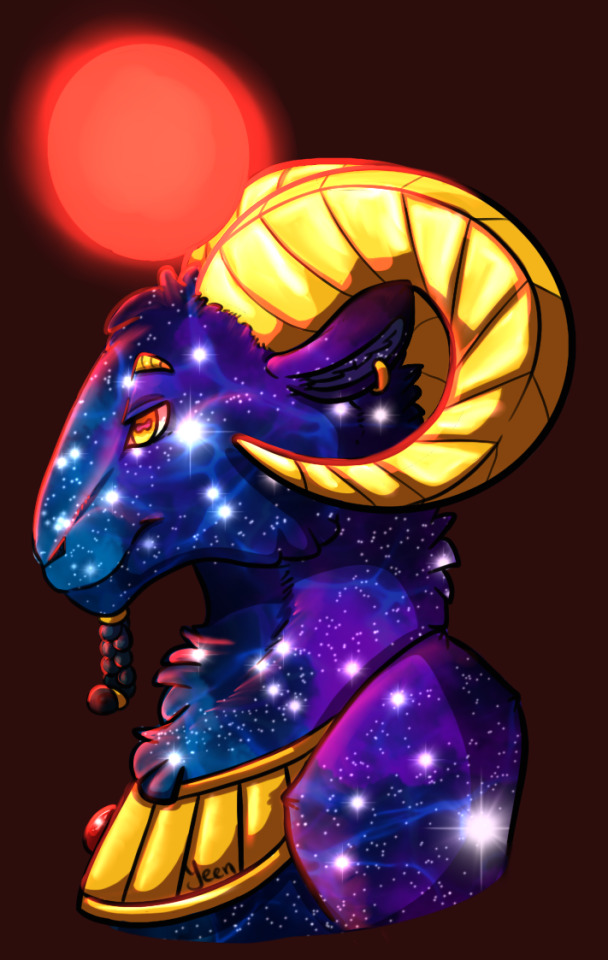

Amun-Ra, The Hidden One
Honestly one of my favorite gods to draw. I get Him heavily as a cosmic ram, the creator of everything, but He is still very much The Hidden One, too! Shown here both in cosmic form and a more hidden/obscured form :3
116 notes
·
View notes
Photo
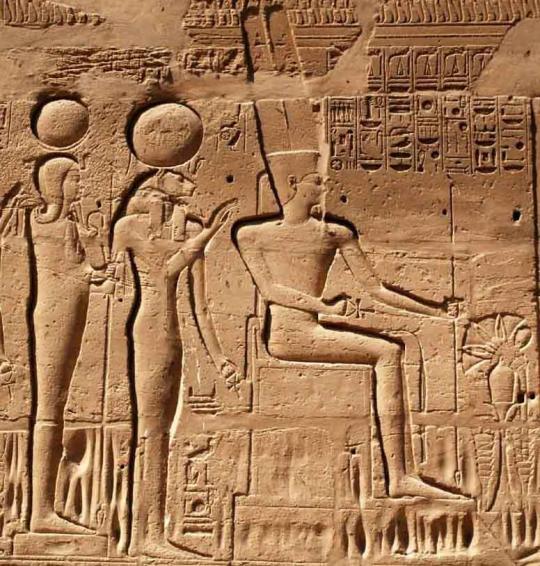

The Theban Triad: Amun-Re enthroned, accompanied by a lion-headed Mut and their son Khonsu (1), and an example of Mut in her more common human form (2).
Source: memphis.edu
#Theban#Triad#Amun-Re#enthroned#lion-headed#Mut#Khonsu#human form#ancient egypt#Ancient Egyptian#ancient civilizations#wall#walls#Egypt#photography#symbols#symbolism#Symbology
92 notes
·
View notes
Text
O’ Hidden Sun in the Depths of Nun,
I call to you.
Amun-Re,
Chief of the Gods,
my arms are raised for you.
My heart is true,
my lips speak Ma’at.
For it is you who brings my solace,
and guides my firm step on the sands.
7 notes
·
View notes
Text
WHEREAS Seth (86551) is the Strongest God of Egypt, Amun-Re (3554) is the most Powerful.

#asteroids#love#astro observations#ceres#astrologer#gemini moon#ic#libra rising#zodiac signs#scorpio venus#Libra#Amun#Capricorn#Amun-re#gods of Egypt#Egyptian gods#Egyptians#ancient culture#ancient world#ancient greek#ancient aliens#ancient history#ancient egypt#ancient rome#ancient art#ancientmonuments
4 notes
·
View notes
Text
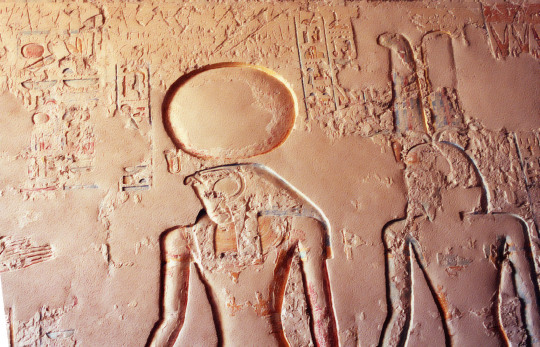
Re and Amun from the tomb of Ramses IV
200 notes
·
View notes
Text
More gods parade on the yellow mummy mask, this time on the right side: Horus, Amun-Re, Thoth, and Ra-Horakhty, whose sundisc contains a scarab. Above the gods are a frieze of djed and tyet symbols.
(This thesis contains a detailed analysis of the gods on the mask, and I've used it to identify them.)
When: Roman Egypt
Where: Metropolitan Museum of Art, New York
#Ancient Egypt#mummy mask#Horus#Thoth#Roman Egypt#Metropolitan Museum of Art New York#Amun Re#Ra Horakhty
8 notes
·
View notes
Photo

Ahmes, “Scribe of accounts of gold” and “Overseer of the works of the god Amun”, kneels holding a stela with a prayer to the sun god Re.
Granite.
New Kingdom, 1550-1300 BC
National Museum of Denmark, Department of Classical and Near Eastern Antiquities
#history#historyblr#national museum of denmark#museum of denmark#history museums#history museum#museum#museums#egyptian history#egyptian artifacts#egyptian statues#stela#re#ahmes#egyptian scribes#amun#ancient egypt#ancient egyptian artifacts
22 notes
·
View notes
Text
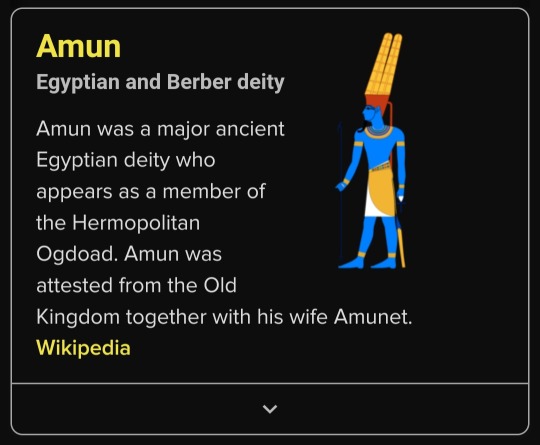
.... who is definitely not just Amun in a dress
#jokes and joshing#i mean the whole ogdoad is like that#was trying to remember it was amun or re who had the ram form variation
2 notes
·
View notes
Text
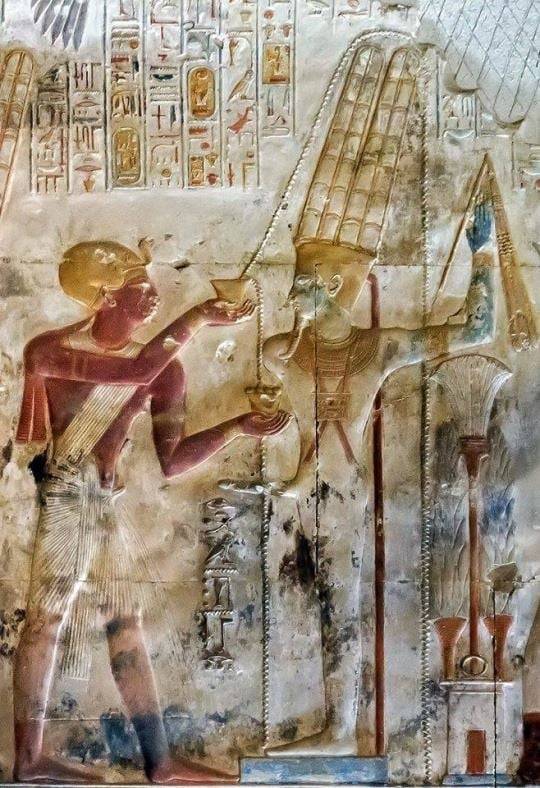
A detail of a relief depicts King Seti I offering a bowl with four pellets of incense to the god Amun-Re who posed as mummiform and ithyphallic, and sprinkling him with water.
Inner Shrine of Amun-Re, Temple of Seti I at Abydos.
55 notes
·
View notes
Text
Temple of Amun-Re and Hypostyle Hall

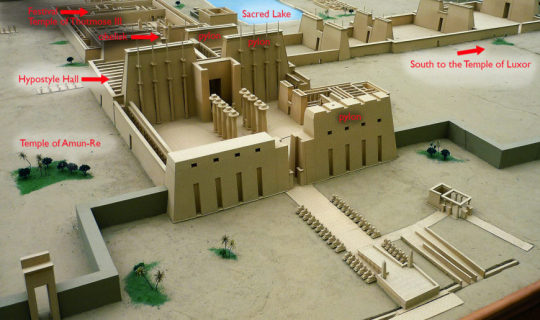

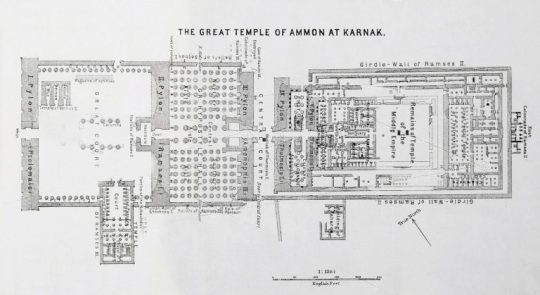
Karnak, Egypt
New Kingdom Egypt (Ancient Near East)
1550 BCE (temple) 1250 BCE (hall)
Cut sandstone and mud brick
Form: Combining the land from all components of this site, it spans more than 200 acres. The sacred area enclosed to honor Amun is 61 acres all by itself, and the hypostyle hall is 54,000 square feet (making it the largest singular room of any religious building in the world to this day) and is filled with 134 columns. The inside of the temple was originally brightly painted
Content: Inside of the temple, the main path through the center slowly raises the deeper inside the building it gets. The columns inside the hall have shallow reliefs carved into them and depict creation stories, as well as symbols of paradise (lotus, palm plants, papyrus). The roof/ceiling would have been decorated with images of stars, the sky, and birds.
Context: In ancient Egypt, it was believed that at the end of agricultural season, the gods and earth were left exhausted. Because of this, it was necessary to help replenish their energy by participating in the Opet festival. The Opet festival lasted for 27 days, starting at the Temple of Amun-Re and the Hypostyle Hall, and ending 1 and a half miles south. This celebration also strengthened the link between a pharaoh and Amun. Accessibility to the deeper parts of the temple became more and more restrictive with each pylon (see image 2), as a means to show the higher social class was closer to god. However, the deepest part of the temple was restricted to priests and the pharaoh exclusively. The temple and hall were a pilgrimage site for over 2,000 years.
Function: While the religious ritual practices at this site serve as its main function, the temples also represented the creation of the world as the Egyptians believed it. It was believed that the world was originally only water, and that the first solid land to emerge from the water was a pyramid-like mound, also known as a benben. The structure of the temples were shaped in this way as well, so when the Nile flooded, it would seem even more like the original mound of creation.
sources:
khan academy
#ap art history#ancient mediterranean#ancient egypt#ritual#power and authority#sacred space#narrative#architecture#relief sculpture#temple of amun re#hypostyle hall
6 notes
·
View notes
Text
the egyptian gods
MA'AT: the essence of harmony and balance
in the beginning, well, there were a lot of different beginnings,
AMUN/AMUN-RA: god of the sun and air, supreme king of the gods in some periods. some stories say that he created himself and then everything else in the universe
ATUM: sometimes considered another name for Ra, but when separated he represents the evening sun. he was the first of the Ennead to emerge from Nu, and was the supreme ruler of the gods, and creator of the universe and human beings
RA/RE: when separated from Atum, he represents the midday sun, but other stories say that his aspect changes as he advances his sun barge across the sky. also considered the supreme ruler and creator of the universe. later merged with Amun as he rose in popularity
PTAH: another creator of the universe, Ptah was lord of truth, and the patron god of sculptors and craftsmen (since he was considered to have sculpted the earth). he created the first mound of earth from Nu by imagining it in his heart and breathed life into things with his voice
KHNUM: said to have created everything on his potter's wheel. in a different story he created humans on his potter's wheel then raised them up to the sun so that Ra could breathe life into them
NEITH: a war and funerary goddess, she created all things from her innards. she invented birth, therefore considered the "mother goddess" and closely associated with life and living things
MUT: emerged from Nu and gave birth to the world on her own, or in other stories was the wife of Amun. she was a goddess of protection, guarding humans in life, and against demons in death
MEHET-WERET: celestial cow goddess that emerged from Nu and gave birth to Ra at the beginning of time. goddess of water, creation, and rebirth
then under Atum/Ra creation stories, there were the first gods, called the Ennead,
SHU: the primordial god of air, he was born from Atum/Ra with his sister Tefnut to create the world. it's said that after bein gone for so long, Atum/Ra sent the eye of Ra to search for them, and his tears of happiness at having them returned became humans
TEFNUT: the sister and wife of Shu, she was the primordial god of moisture and rainfall
NUT: child of Shu and Tefnut, she represented the sky, but her relationship with her brother Geb disturbed Atum/Ra so he pushed her high above Geb, decreeing that she could not give birth on any day of the year. however, Thoth then gambled with Iah (or Khonsu) winning five days of moonlight he transformed into days. On those five days, her five children were born
GEB: god of the earth and growing things
OSIRIS: child of Nut and Geb, he was lord and god of the underworld and afterlife. he was said to be the first god to die, after being killed by his brother Set, wherein Isis then resurrected him and they bore Horus.
ISIS: child of Nut and Geb, she was the goddess of the moon, healing, fertility, and magic
NEPHTHYS: child of Nut and Geb, she is the twin sister of Isis and wife of Set. she is considered a goddess of funeral rites, darkness (not in an evil sense), and protector of women.
SET/SETH: child of Nut and Geb god of war, chaos, and storms. although he was the first murderer, he was considered a necessary balance to the good of Osiris. he killed Osiris to usurp his throne, only to later be usurped by Horus.
However, sometimes Set was replaced with Horus in the Ennead,
HORUS: technically there were two Horuses, Horus the Elder, who was a child of Nut and Geb, and Horus the younger, who was the better known Horus. however, they ended up merging into one deity, a god of the sun, sky, and kingship
under the Amun (and sometimes Ptah) creation myth(s) there was the group called the Ogdoad, including Amun and
AMUNET: the female counterpart of Amun, together they represented forces unseen, including the wind and air
KEK: the god of the hours before dawn, he guided the sun barge of Ra from the underworld to earth
KAUKET: the female aspect of Kek, she represented the hours after sunset, and guided the sun barge of Ra into the underworld. Together these gods represent darkness (but not in an evil way)
HEH AND HAUHET: often not separated in any meaningful way, these two were the gods of infinity, eternity, and time
NUN AND NAUNET: personification of the primordial waters, from which everything was created. Naunet is only ever referenced when it comes to the Ogdoad
However, when Amun became revered as a god of creation, him and Amunet were sometimes replaced by
NIA AND NIAT: gods of the void
so then the rest of the gods,
THOTH: advisor of Atum/Ra, he was the god of wisdom, writing, and truth, and was associated with the moon. sometimes he is the child of Atum/Ra, other times he is the son of Horus. he gave humanity the gift of language and marked the passage of time
SESHAT: consort of Thoth, she was the goddess of writing, books, and measurements
ANUBIS: son of Nephthys and Osiris, he was the god of the dead and associated with embalming. he leads the souls of the dead to the Hall of Truth and weighs their heart to determine if they were good or evil
KABECHET/QEBEHT: daughter of Anubis and a funerary deity. she provides cool, pure water to the souls awaiting judgement in the Hall of Truth
BASTET: daughter of Ra, although her image has tempered over time, Bastet was often considered a defender of pharaohs and the hearth. goddess of cats, women, and fertility
SEKHMET: sister of Bastet, she was goddess of destruction, justice, and desert winds. after Ra became tired of the sins of humanity, he sent Sekhmet to destroy them. she ravaged the land until the other gods implored Ra to stop her, where he took beer dyed red (to emulate blood) and left it at Dendera. when she drank it, she fell asleep and woke as the benevolent goddess Hathor
MAAHES: solar god and protector of the innocent, sometimes the son of Bastet, sometimes Sekhmet
HATHOR: goddess of joy, celebration, love, women, drunkenness, and sometimes animals. in some stories she is the wife of Horus the elder, in some Horus the younger, and in some Ra
MA'AT: embodiment of the principle of ma'at, she was the goddess of truth, justice, and harmony
KHONSU: the son of Amun and Mut, god of the moon and healing
MONTU: a god of war and the vitality of pharaohs, he was later replaced by Khonsu as a child of Amun and Mut
TENENIT: goddess of beer and brewing, consort of Montu
HEKA: patron god of magic and medicine, but was also said to be present at the creation of the universe
HU: god of the spoken word, personification of the first word Atum/Ra ever spoke. represented the tongue
SIA: personification of perception and thoughtfulness who represented the heart
ANAT: goddess of fertility, sexuality, love, and war. sometimes she is a virgin goddess, others she is sensuous and erotic
APEP/APOPHIS: the celestial serpent that would assault the sun barge of Ra every night as it travels through the underworld
BA-PEF: god of terror
BES/BISU/AHA: god of childbirth, fertility, sexuality, humor, and war. he protected women and children, fended off evil, and fought for divine justice
TAWERET/TAURET: considered a consort of Set, goddess of childbirth and fertility. guarded children and invoked to help with pregnancy and birth
HRAF-HAF: the ferryman of the dead, he would carry good souls across the Lily Lake to the shores of paradise in the Field of Reeds
AMENET: consort of the divine ferryman, she welcomed souls of the dead to afterlife with food and drink
FETKET: cupbearer of Ra, patron of bartenders
MAFDET: goddess of justice, protected people from venomous bites, later replaced by Serket
SERKET: goddess of protection and funerals, protected people against venom
HEDET: goddess of scorpions and protector against their venom
IHY: son of Hathor and Horus the elder, he was the god of music and joy
IMHOTEP: the deified vizier of the king Djoser, god of wisdom and medicine
MESKHENIT: goddess of childbirth, created a person's ka (life force) and breathed it into them, creating their destiny
NEHEBKAU: joined a persons ka to their body at birth, and with the ba (winged aspect of the soul) at death. has always existed, and swam in the primordial waters before Atum rose
NEFERTUM: god of perfume and beauty, said to be born from the bud of a blue lotus flower at the beginning of creation. associated with rebirth and transformation due to his association with Atum
RENENUTET: goddess of nursing children and the harvest. she determined the length of a person's life and the important events that would occur, sometimes considered the mother of Osiris as consort of Atum
NEPER: son of Renenutet, god of grain and fertility
ONURIS/ANHUR: a son of Ra, god of war and hunting
SHAY: personification of fate, no one could alter her decisions
SHED: god who protected against wild animals and mortal enemies
SHEZMU: god of wine, perfume and plenty
SOBEK: god of water and medicine, namely surgery. lord of marshes and wetlands
SOTHIS: astral form of Isis, represented the star Sirius
SAH: astral form of Osiris, represented the constellation Orion
SOPDU: son of Sothis and Sah, astral form of Horus, guarded over outposts and soldiers on the frontier
TAYET/TAIT: goddess of weaving and associated with embalming
WENEG: held up the sky and maintained balance between the heavens and earth
and the sons of Horus, who get their own special spot,
DUAMUTEF: protector god of the stomach, he represented East
HAPY: protector god of the lungs, he represented the North
IMSETY: protector god of the liver, he represented the South
QEBEHSENUEF: protector god of the intestines, he represented the West
#pagan#paganism#witchblr#witchcraft#witch#egypt#ancient egypt#egyptian mythology#egyptian gods#polytheist#polytheism#deity worship#deity#deity work
875 notes
·
View notes
Text
Hidden in the waters,
surrounded by Nun,
you rise with the dawn,
shining from your hidden places,
enlivening my ka,
strengthening my heart.
Dua Amun-Re!
6 notes
·
View notes
Text

Stele fragment depicting King Thothmes III bearing the warrior crown and uraeus, presenting food offerings to the god Amun-Re
circa. 15th century BC
Located in the Israel Museum
#ancient egypt#ancient history#egyptian hieroglyphs#egyptian art#archaeology#egyptian history#egyptian mythology#egyptian gods
302 notes
·
View notes
Text

Interior of Coffin of 'Chief of Scribes of the Temple of Amun Re, Nespawershefi' (from the Third Intermediate Period)
unknown artist
The Fitzwilliam Museum
89 notes
·
View notes
Text


Ra (Egyptian God)
Ra (also given as Re) is the sun god of ancient Egypt. He is one of the oldest deities in the Egyptian pantheon and was later merged with others such as Horus, becoming Ra-Horakhty (the morning sun), Amun (as noonday sun), and Atum (the evening sun) associated with primal life-giving energy.
Ra is the Egyptian word for 'sun'. As a solar deity, Ra embodied the power of the sun but was also thought to be the sun itself, envisioned as the great god riding in his barge across the heavens throughout the day and descending into the underworld at sunset. As he made his way through the darkness beneath the earth, he was attacked nightly by the giant serpent Apophis (also known as Apep) who tried to prevent the sun from rising and so destroy all life on earth.
Ra in the Heavens
Ra on the Earth
Ra in the Netherworld
Ra as Creator
Ra as King and Father of the King
30 notes
·
View notes
